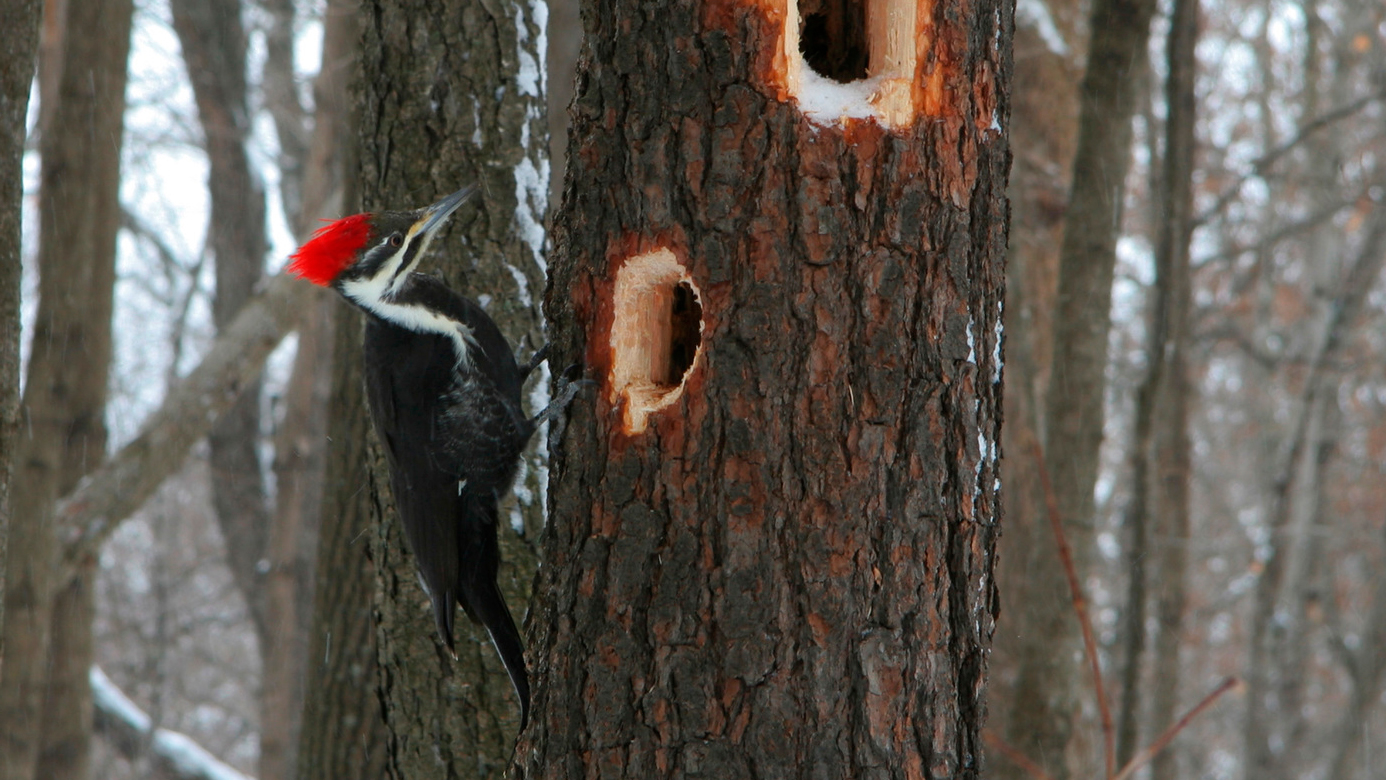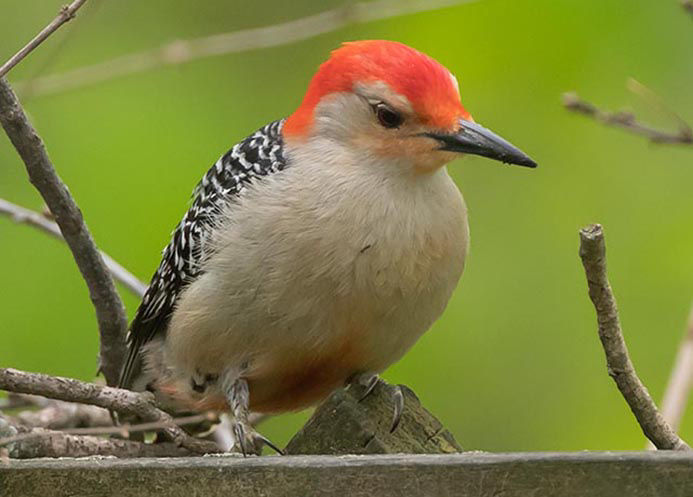Woodpeckers: A Comprehensive Guide to Comprehending These Special Birds
Woodpeckers, with their unique habits and physical qualities, have long captivated the curiosity of ornithologists and nature enthusiasts alike. From their rhythmic drumming resembling via the timbers to their exceptional adjustments for scaling tree trunks with simplicity, these birds present a fascinating research in bird biology. However, what truly establishes woodpeckers apart is not just their striking appearance yet additionally their essential duty in preserving the delicate equilibrium of environments. As we discover the complex anatomy, diverse species, and eco-friendly relevance of woodpeckers, a deeper admiration for these distinct birds and the secrets they hold unfolds.

Woodpeckers' Drumming Behavior
Woodpeckers show a balanced and specific drumming actions that serves different vital functions in their lives. This behavior is largely related to interaction, area defense, and foraging. The distinct drumming audio is produced by the rapid pecking of their beaks versus tough surfaces such as tree trunks, branches, and even metal things.
Communication is a vital element of woodpecker habits, and drumming plays a significant role in this procedure. Woodpeckers utilize drumming to establish their presence, bring in companions, and maintain contact with their partners and spawn. The regularity, strength, and duration of drumming series communicate specific messages to various other woodpeckers in the area.
Along with interaction, woodpeckers use drumming actions for area protection. Woodpeckers in Florida. The loud and repeated drumming functions as an advising to prospective intruders, indicating that the area is currently claimed. By developing their territory with drumming, woodpeckers reduce the chance of disputes over valuable resources such as food and nesting websites
Additionally, woodpeckers also utilize drumming as a foraging strategy. The rhythmic pecking aids them locate pests hiding underneath the bark of trees by creating vibrations that interfere with the prey's cover-up. This behavior showcases the versatility and ingenuity of woodpeckers in utilizing their drumming skills for several essential functions.
One-of-a-kind Adaptations for Tree Climbing
Having understood the art of drumming to communicate, protect area, and forage, woodpeckers have actually evolved special adjustments that facilitate their amazing climbing up capacities in their arboreal habitats. One essential adjustment is their customized feet. Woodpeckers have zygodactyl feet, with two toes pointing ahead and 2 toes aiming backward. This arrangement offers a solid grasp on the upright surface areas of trees, allowing them to cling effortlessly while foraging for bugs or drumming. Furthermore, woodpeckers have tight tail plumes that work as a prop to support their bodies as they climb. These tail feathers supply security and equilibrium, making it possible for woodpeckers to maneuver up tree trunks with precision and agility.
Moreover, woodpeckers have powerful neck muscular tissues and an one-of-a-kind head framework that help in their climbing abilities. Their strong neck muscular tissues permit them to swiftly peck at tree bark without experiencing whiplash, while their thick skull and small mind function as shock absorbers, securing them from the effect of repeated drumming. These adaptations jointly make it possible for woodpeckers to browse the vertical world of trees with performance and poise.

Function of Woodpeckers in Ecological Communities
Playing a critical function in woodland ecosystems, woodpeckers contribute significantly to the equilibrium and health of their habitats via their unique behaviors and interactions with various other varieties. One of the vital environmental features of woodpeckers is their duty in regulating insect populations. By foraging for insects under the bark of trees, woodpeckers assist control bug populaces, preventing outbreaks that might hurt the general wellness of the woodland. In addition, woodpeckers develop dental caries in trees that work as important nesting websites for a range of various other bird types, advertising biodiversity within the environment.
Furthermore, the drumming and vocalizations find more of woodpeckers play YOURURL.com a vital duty in interaction and area establishment. These sounds not just offer to draw in mates but additionally assist define boundaries in between various woodpecker territories, reducing problems and advertising a harmonious conjunction within the woodland neighborhood. In general, the visibility of woodpeckers in woodland environments highlights their significance as keystone species, affecting the dynamics and functioning of these environments in diverse means.
Anatomy: Specialized Beaks and Feet
In the complex web of forest ecological communities, the specialized beaks and feet of woodpeckers are necessary adaptations that enable them to accomplish their essential eco-friendly roles. Woodpeckers possess special physiological features that are particularly designed to help them in their foraging and nesting actions.
One of the most distinctive function of woodpeckers is their solid, chisel-shaped beaks. These beaks are perfectly adapted for boring right into wood to uncover bugs, larvae, and sap surprise beneath the bark of trees. The strong muscle mass and tough structure of their beaks enable woodpeckers to eat a price of approximately 20 times per second without causing damage to their heads.
In addition, woodpeckers have actually specialized feet that aid in their acrobatic climbing capacities. Their feet have 2 toes pointing forward and two toes directing in reverse, giving a solid grip on vertical surfaces (Woodpeckers in Florida). This distinct foot plan, together with rigid tail plumes that function as an encouraging prop, permits woodpeckers to stick to tree trunks and branches with convenience while they search for food or excavate nesting cavities
Woodpecker Species Diversity
Woodpeckers are a varied team of birds found throughout numerous ecosystems worldwide, with over 200 well-known types exhibiting adjustments to different environments. Woodpeckers have actually progressed to occupy an array of atmospheres, from forests and timberlands to grasslands and deserts, each presenting unique difficulties that important site have affected the development of distinctive woodpecker types.
These adaptations allow woodpeckers to forage successfully in their respective habitats, minimizing competitors amongst species and promoting specific niche distinction. Additionally, geographic isolation and historical variables have actually played a role in shaping the distribution and diversity of woodpecker types, leading to the vast array of specialized adaptations seen in these fascinating birds.

Final Thought
To conclude, woodpeckers are fascinating birds that show distinct drumming behavior, specialized adjustments for tree climbing, and play essential duties in environments. Their composition, consisting of specialized beaks and feet, enables them to thrive in their setting. With a diverse variety of woodpecker types found worldwide, these birds are essential for preserving the health and equilibrium of forests and timberlands. Understanding and valuing the ins and outs of woodpeckers can give beneficial insights right into the natural globe.